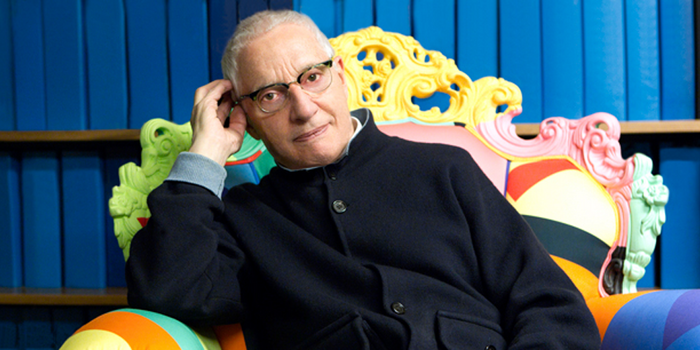The European Prize for Architecture Awards Tell a friend
Alessandro Mendini (born 16 August 1931 in Milan) is an Italian designer and architect. He played an important part in the development of Italian design. He also worked, aside from his artistic career, for Casabella, Modo and Domus magazines. His design has been characterized by his strong interest in mixing different cultures and different forms of expression; he creates graphics, furniture, interiors, paintings and architectures and wrote several articles and books; he is also renowned as an enthusiastic member of jury in architectural competition for young designers. He also teaches at the University of Milan.Mendini graduated from Politecnico di Milano in 1959 with a degree in architecture and worked as a designer with Marcello Nizzoli. He was the editor-in-chief of a magazine from 1980 to 1985 and changed the landscape of modern design through his quintessential works of postmodernism, such as the Proust Armchair and the Groninger Museum. Just as works of the Renaissance period expressed human values and sensibilities, Mendini has contributed to bringing into the heart of design those “values” and “sensibilities” that have been eclipsed by commercialism and functionalism. He collaborates with leading international brands including Cartier, Hermes, and Swarovski.Currently he runs his own practice in Milan, the Atelier Mendini, together with his brother Francesco Mendini.
In the 1970s he was one of the main personalities of the Radical design movement. He became one of the founding members of the "Global Tools" collective, which was set up in 1973. In 1979 he joined the Studio Alchimia as a partner and there he worked with Ettore Sottsass and Michele De Lucchi. In 1982 he co-founded Domus Academy, a private postgraduate design school in Milan. As architect, he designed several buildings; for example the Alessi residence in Omegna, Italy; the theater complex "Teatrino della Bicchieraia" in the Tuscan city of Arezzo; the Forum Museum of Omegna, a memorial tower inHiroshima, Japan; the Groninger Museum in The Netherlands and the Arosa Casino in Switzerland.His work in product design was influential in the sense that it pushed the boundaries of what products could be. A notable example is his Lassú chair from 1974, a chair built on top of a pyramid structure, which forgoes conventional notions of function. Mendini was addressing the domestic object as a conduit for spirituality, an idea reinforced by his ritualised burning of the chair, photographed for placement on the cover of Casabella in 1975.As designer, the historical value of the RAMUN amuleto lamp designed in 2010 is the ring shape that accentuates the strengths of LED, which enhances lighting uniformity. The use of a transparent material flaunts the mechanism of the lamp. A mix of various colors in the minimalist structure, consisting of circles and straight lines without any spring or wire, inspires human sensibility.

















